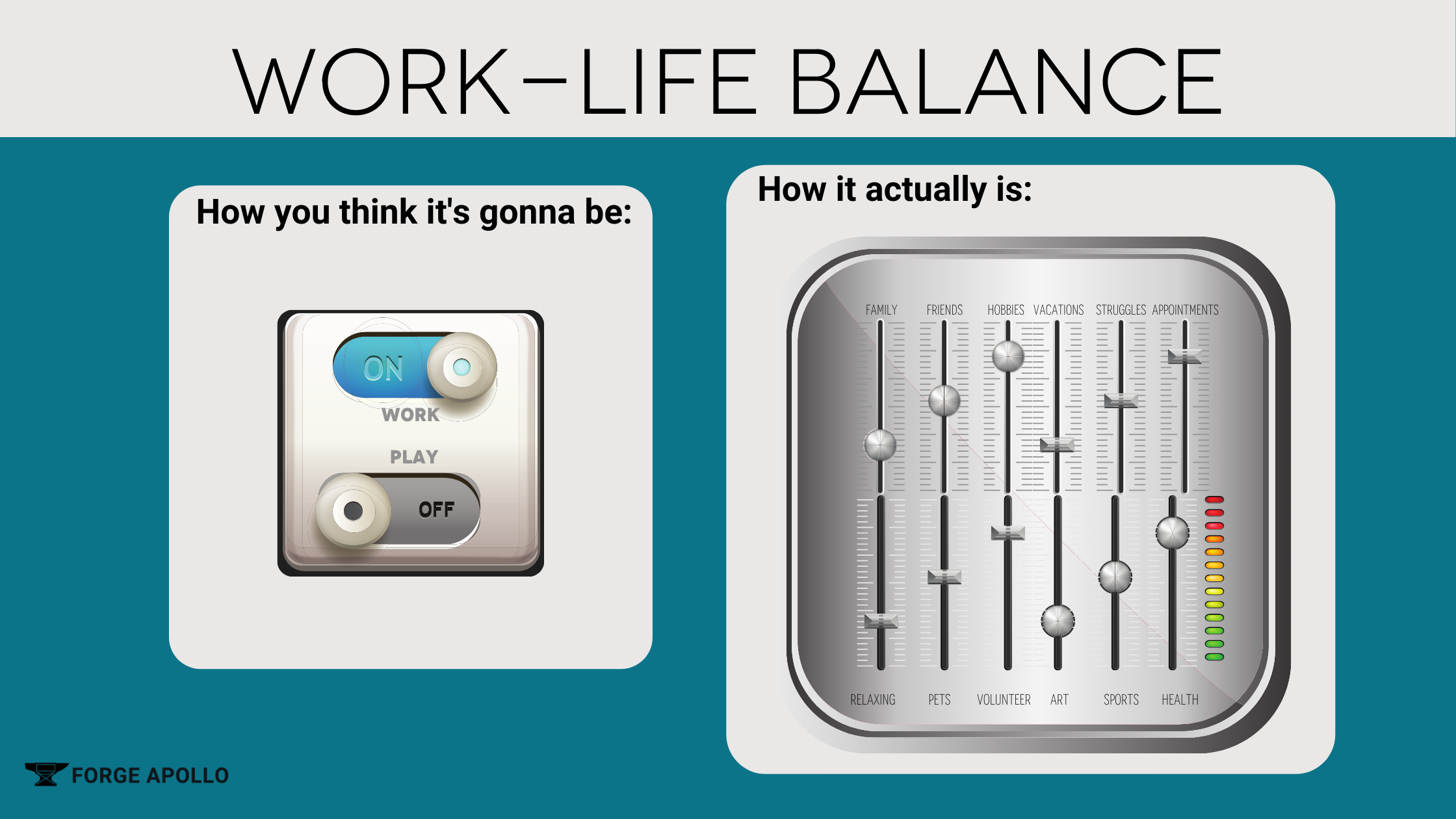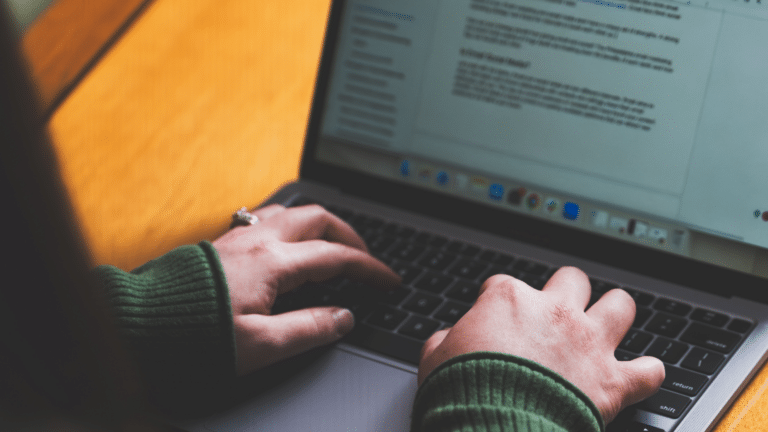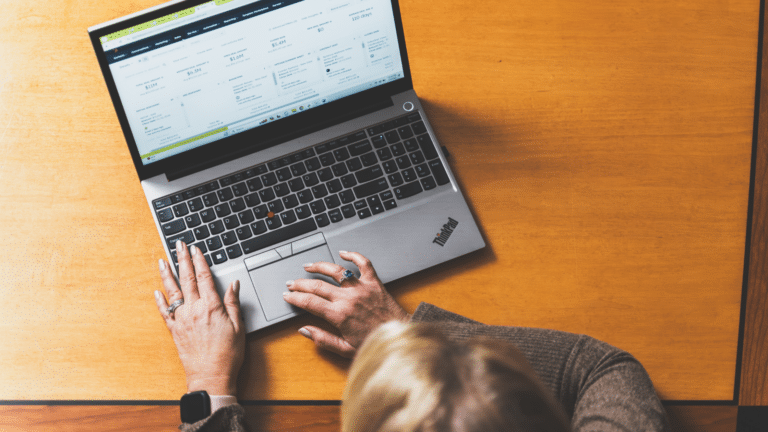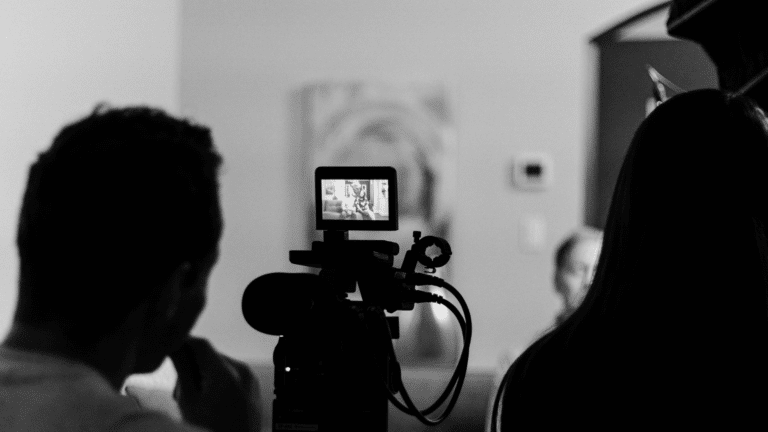Working from home was formerly a luxury attainable by only a handful of people in the workforce. However, as a result of the global COVID-19 pandemic, working from home (or WFH for short) became the new norm for many employees who formerly believed that remote work was unrealistic in their careers. Consequently, both personal routines and work procedures had to be substantially revised to accommodate this progressive lifestyle. The concept of widespread working from home decisively blended the boundary between work and home life, creating the need for modernized daily practices. Those who teeter on the blurry line of hybrid scheduling (some days at home, some days in the office) often equally struggle to find a sufficient work-life separation.
We live in a digital age that regularly obscures the limits of our ability to compartmentalize. And when hybrid and remote work have become increasingly normalized, the line between work and home becomes even finer. Traditionally taboo topics such as childcare, health risk, and familial challenges are now being shared to adjust schedules appropriately. This inevitable overlap makes it nearly impossible to effectively separate home and work.
Although the current climate makes it tough to establish this divide, there are effective ways one can combat digital burnout and find an adequate balance. On October 10th we celebrated World Mental Health Day, established by the World Health Organization, with the objective of raising awareness and offering support for those suffering with mental health. We’ve all been affected by this virus in some way, and now more than ever, we’re obligated to mobilize efforts towards improving overall emotional wellbeing. Refer to the following list for useful tips in creating a healthy internal environment in the informational age.
1. Practice Mindfulness
We often associate the word “mindfulness” with traditional meditation. But the truth is that awareness and prioritization of one’s own mental health looks different to everyone. Luckily, deep breathing and yoga aren’t the only forms of mindfulness practices. In fact, there’s a wide variety of nontraditional meditation methods and approaches that may be more beneficial for you if those methods aren’t working.
Simple physical activities such as walking, biking, skating, and boating can all be considered forms of relaxation and reflection. The objective of meditating is to achieve a state of mental calmness and clarity – so any exercise or action you take to attain that state of mind can be considered a form of meditation. Whether it’s gardening, painting, coloring, journaling, dancing; if it frees your mind and gives it a chance to reconnect with your body, you are meditating.
Once you try out different methods and settle on one that’s right for you, be sure to set aside sufficient time to practice. Schedule out time in your calendar and switch on the Do Not Disturb feature. The best part about meditation is you don’t have to be good at it – there’s no need to set strict goals, to capitalize on it, or even tell anyone about it. Whatever way you meditate, the only meaning or purpose behind it is benefitting your mind and body and creating a flourishing headspace.
2. Communicate Clear Boundaries Honestly
Everyone has individual needs and obligations apart from work. Maybe you have children or pets, provide care for a loved one, volunteer, or run your own business on the side. Regardless, everyone has non-work-related responsibilities, so don’t be afraid to share these with colleagues. In the long run, it’ll help avoid surprises and help managers delegate tasks more effectively.
Transparency in the workplace is essential for all staff members and even good for business. Did you know that confiding in coworkers about personal issues can increase employee engagement, help to encourage innovation, and lead to better communication? Sharing your struggles can potentially bring a team closer together by building trust and promoting integrity.
It’s also important to advocate for yourself and your time. Establish clear time frames for work and personal activities. Demonstrate strict times where you are off-limits and effectively define what constitutes an emergency in your line of work. Be sure to speak up to your superiors should you feel your time is being exploited or if you think you’re falling behind on critical tasks. Although this can be especially challenging in remote and hybrid work environments, it’s not impossible. Efficient time management and communication skills are vital in maintaining a healthy work-life balance.
3. Create a Designated, Comfortable Workspace
If you’re going to be working from home regularly, try to allocate a space in your home that’s strictly for working. This should be somewhere you don’t do any other activity – not your bed, couch, or dinner table. It’s vital to find a comfortable location (even if it’s just a specific chair) that turns your work mode on when you enter.
Although this space should be committed to working, it should still be charming and cozy – a place that you are excited to go to and enjoy being in. You can use a bean bag chair and lap desk, ergonomic seating, fresh flowers, plants, or display pleasant artwork. It may even help to devote a particular object to your home office – like a special mug, pillow, or pen.
On the other hand, a contrasting space should be deemed a work-restricted zone. Here, you should be able to effectively separate yourself from work stress and prohibit extensive screen time. This area can double as your area for mindfulness or meditation as well.
Businesses that find their employees struggling with keeping digital responsibilities apart may want to consider implementing work devices such as phones, tablets, or laptops. These company-appointed tools may make distinguishing personal and professional obligations easier, especially in high technology-based industries.
4. Stay Informed… Offline
According to Pew Research Center, more than 80% of Americans consume news using a digital device, and about a third of Americans prefer to get their information from television. However, there are many ways to remain informed about the world around us without the potentially harmful effects of screentime. Newspapers, published articles, magazines, podcasts, and radio are all immersive sources that can provide valuable information on current events while remaining unplugged.
Recent news can be found in various places that don’t involve staring at a screen, including communicating with peers and friends that share your interests. You can learn something from everyone you meet – you have to ask the right questions. Staying connected and learning from one another is one of the most organic ways to improve interpersonal skills and expand one’s own knowledge.
5. Give Yourself Things to Look Forward to
An excellent way to stay motivated is to plan for occasional extravagance. Similar to mindfulness practices, your version of splendor may vary widely from someone else’s, but it should ultimately make you feel good inside. This self-love ritual can involve getting your hair/makeup/nails done (or doing them yourself), going on a shopping spree, taking a spa day, or preparing a fancy meal (ordering out works too). An essential facet of your relationship with your mind is spending time enjoying yourself – alone or with others. Most importantly, you must give yourself things to look forward to: plan regular lunches with friends, go golfing on the weekends, or sign up for a monthly subscription gift box. Having a checkpoint to break up your work week helps encourage a consistent positive attitude.
6. Remember Your Basic Needs
With everything going on in the world today, it can be easy to overlook your basic individual needs. Elements like fresh air, nutritious meals, sunlight, and adequate water intake are so simple that they’re often forgettable. Are you getting the proper amount of exercise, vitamins, and nutrients daily? If not, it might be time to rethink your self-care routine. Use your calendar to schedule meals, workouts, stretching, water, and breaks as necessary. Adhering to a specific time structure can be challenging but allows you to pinpoint substandard practices and determine what needs require your attention.
You can’t optimize your work performance without first creating a solid foundation for your health. Set reminders as necessary, interact with others regularly and even get a sun lamp for light or a houseplant for air circulation. Don’t fall into the habit of overlooking your basic needs – your effectiveness and your wellbeing will ultimately suffer.
Communication is Key
Living in a digital age frequently blurs the line between personal and professional life. This dynamic is constantly evolving, and if we can effectively prioritize our emotional and physical wellbeing, we can more easily accommodate these changes. When you inevitably get tired and burnt out (and it will happen), it’s important that you know how to rest, not quit. If you’re severely struggling with your mental health, you can find a comprehensive list of resources following this post. Know that there is help available – all you have to do is ask for it.
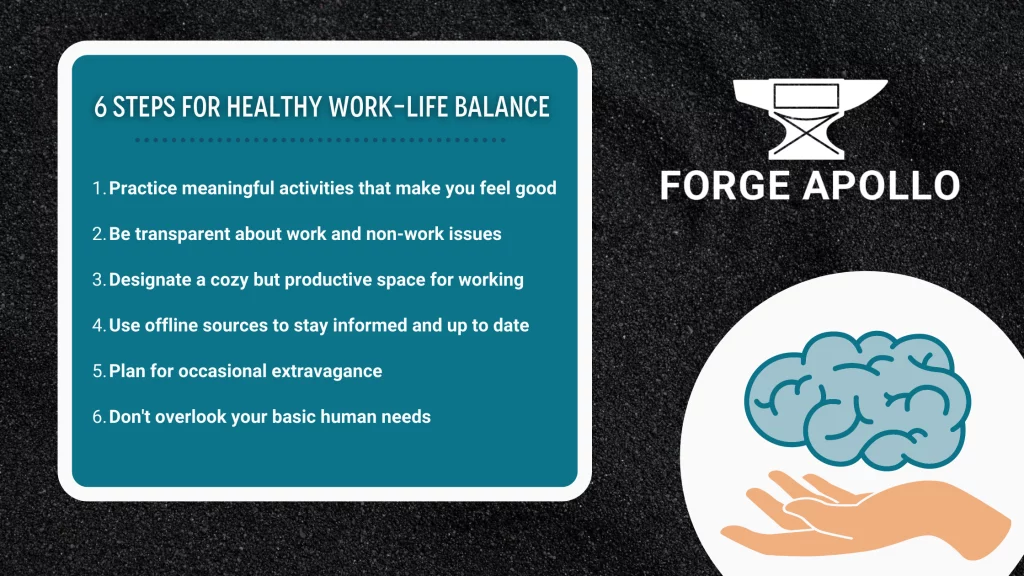 Resources
Resources
Top HelpLine Resources by National Alliance on Mental Illness
Digital Mental Health Resources from Social Work License Map
Anonymous Mental Health Chatrooms by HealthfulChat
Preventing Burnout by Help Guide
Online Therapy Service Options from Very Well Mind
